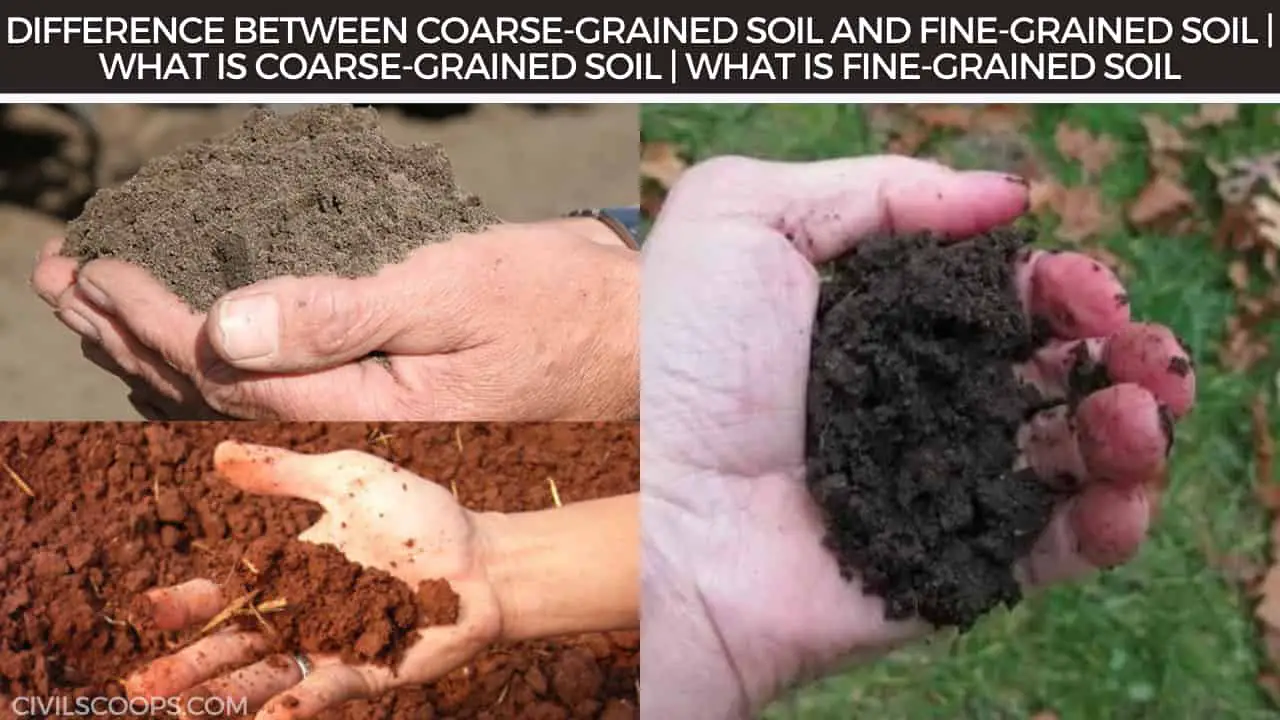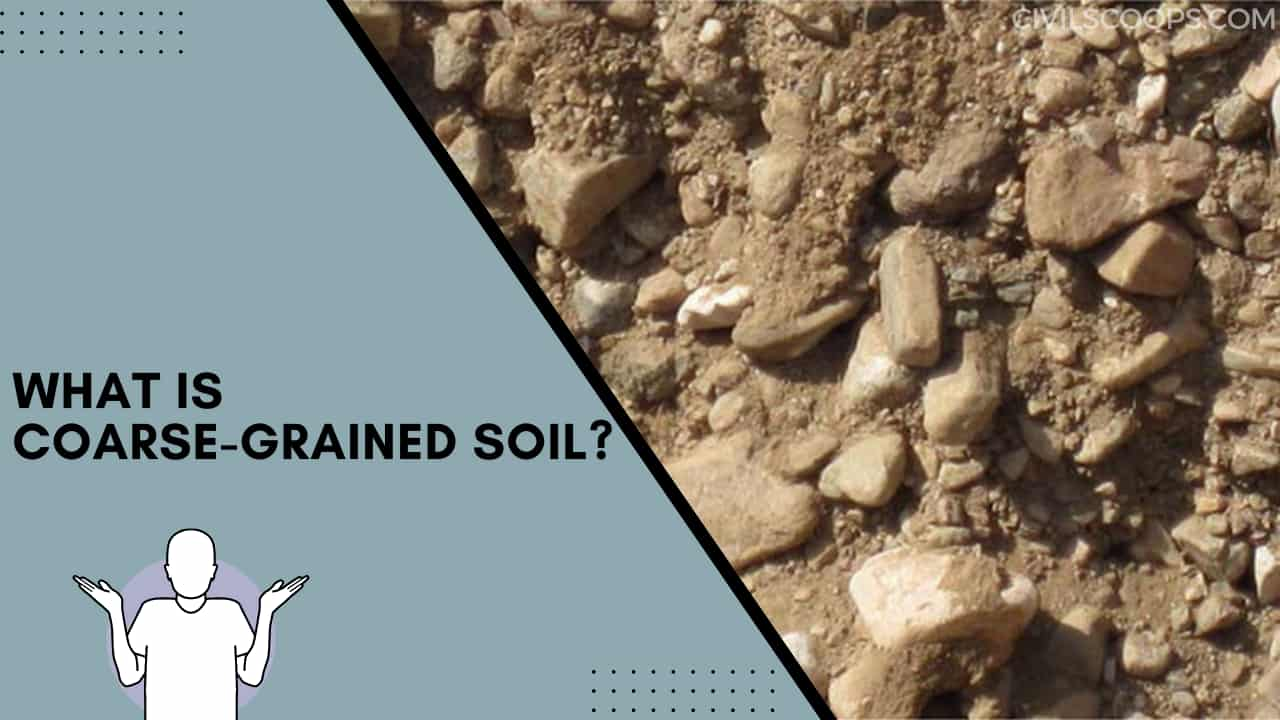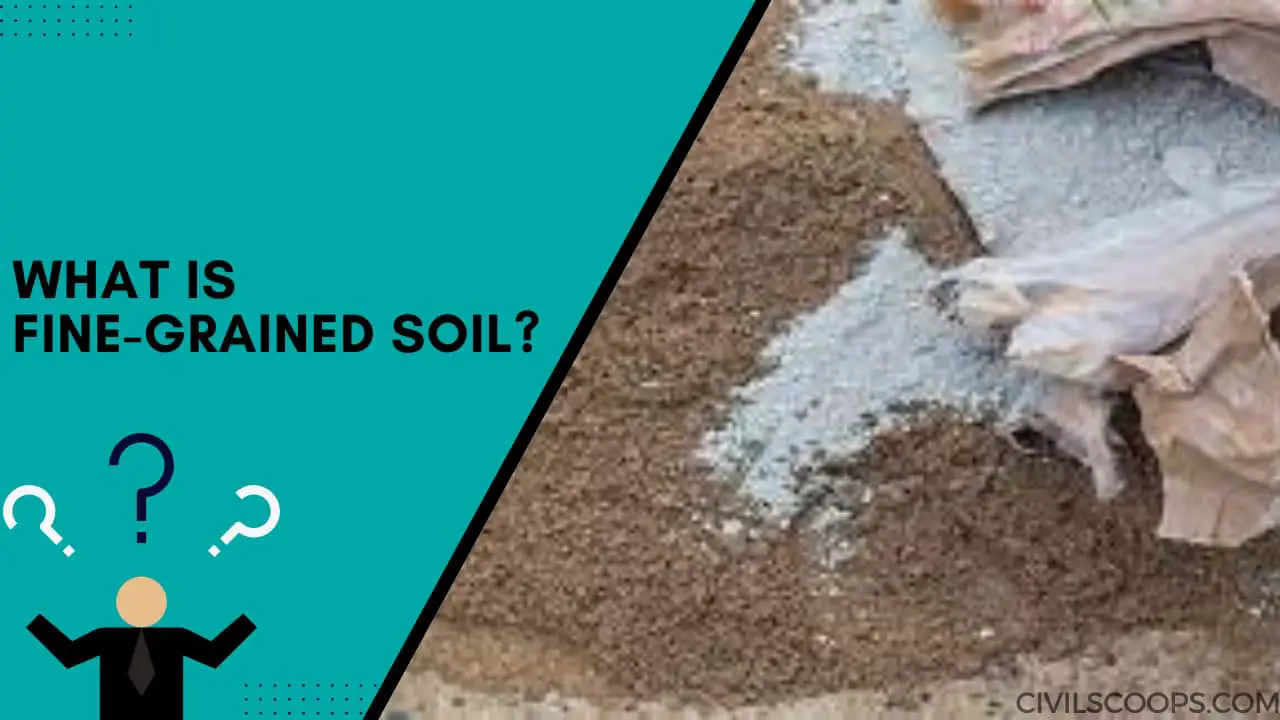Difference Between Coarse-Grained Soil and Fine-Grained Soil | What Is Coarse-Grained Soil | What Is Fine-Grained Soil

Table of Contents
Introduction of Coarse-Grained Soils Vs Fine-Grained Soils
Soil is one of the most important components which should be check and tested before doing any kind of construction on the site. As a civil engineer, it is very necessary that you should know the difference between coarse-grained soils and fine-grained soil so that you can design the structures accordingly.
The soil mainly divided into two types which are as follows
- Coarse-Grained Soils
- Fine-Grained Soils
In this article, you will get to know the Difference between coarse-grained soils and fine-grained soil. The behavior of both coarse-grained soil as well as fine-grained soil is different from each other.
What Is Coarse-Grained Soil?

The coarse-grained soils are mainly identified on the basis of grain size of the particle size of the soil mass. One of the thumb rules which is used for the identification of coarse-grained soils is that the individual particles of the coarse-grained soils can be seen with our naked eye.
One of an example of coarse-grained soils are sand and gravels. We can easily see the particles of the sand and gravel with our eyes. The particles whose size are larger than 75 mm is known as gravel and the particles whose size are less than 4.75 mm up to 75 microns are known as Sand.
The coarse-grained soils have a good load-bearing capacity as well as drainage quality. There is no volumetric changes are seen in the coarse-grained soils in the moisture condition.
What Is Fine-Grained Soil?

Fine-grained soils are generally identified based on their plasticity. The fine-grained soils cannot be seen by our naked eye. The fine-grained soil is basically divided into two groups which are silt and clay. The particles whose size ranges between 75 microns to 2 microns are known as Silt and the particles whose size smaller than 2 microns is known as clay.
The load-bearing capacity of fine-grained soil is low as compared to coarse-grained soils. The permeability of fine-grained soil is very low. The reason of very low permeability of the fine-grained soil that because of its size of the particle are very small due to which it retains water.
Strength of the fine-grained soil changes with respect to the change in the moisture or the water content of the soil. If you touch the fine-grained soil with your hand you will feel it smooth, greasy, and Sticky.
The coarse-grained soil feels gritty when we touch it with our hands. The moisture change in the coarse-grained soil does not affect the strength of the soil. The shape of the coarse-grained soil is generally angular or sub-angular.
Difference Between Coarse-Grained Soil and Fine-Grained Soil
Void ratio is defined as the ratio of the volume of voids to the volume of solid. Void ratio is basically a measure of voids in a particular soil mass. You may think that the soil particles present in the fine-grained soils are very closely packed with each other so that it may have a less void ratio. But in fact, fine-grained soil has more void ratio as compared to coarse-grained soil.
It is because of the concept of the surface area of the particle. The surface area of the fine-grained soil with respect to the soil mass is more as compared to the surface area of the coarse-grained soil.
The voids created in the fine-grained soils are more with respect to soil mass because of its more surface area whereas in the case of the coarse-grained soils there are less voids are created with respect to their soil mass. The clay has a more void ratio as compared to sand.
Also Read: What Is Drip Irrigation | Drip Irrigation Advantages | Types of Irrigation | Drip Irrigation System
Coarse-Grained Soils Vs Fine-Grained Soils
The difference between coarse-grained soil and fine-grained soil are as follows.
[su_table responsive=”yes” alternate=”no”]
| Coarse-Grained Soils | Fine-Grained Soils |
| The coarse-grained soil particles can be seen with our naked eye. | The fine-grained soil cannot be seen with our naked eye. |
| The coarse-grained soil can be identified on the basis of the particle size of the grain size of the soil. | The fine-grained soil is identified on the basis of the plasticity of the soil. |
| The coarse-grained soils have 50% or less material which passes through the sieve number 200. | The fine-grained soil have 50% or more material which passes through the same number 200 |
| The load-bearing capacity of the coarse-grained soil is good. | The fine-grained soil has less load-bearing capacity. |
| There is no change in the strength of coarse-grained soil with respect to the change of the water content of the soil. | There will be the change in the strength of the fine-grained soil with respect to the change in the water content of the soil. |
| The coarse-grained soil feels gritty when it is touched by the hand. | The fine-grained soil feels smooth and sticky when touched by hand. |
| The coarse-grained soil does not retain water and has more permeability. | The fine-grained soil has very less permeability and it can retain water. |
| There will be no change in the volume of the coarse-grained soil with a change in the moisture content. | There will be a change in the volume of the fine-grained soil with a change in the moisture content. |
| The size of the coarse-grained soil particles varies from 4.75 mm up to 75 microns. | The size of the fine-grained soil is less than 75 microns. |
| The coarse-grained soil has less void ratio. | The fine-grained soil has more void ratio. |
| The shape of the coarse-grained soil particles varies from angular to rounded. | The shape of the fine-grained soils are generally flaky. |
| The example of the coarse-grained soil are sand and gravel. | The example of the fine grained soil are silt and clay. |
[/su_table]
[su_box title=”FAQ” style=”default” box_color=”#333333″ title_color=”#FFFFFF” radius=”3″ class=”” id=””]
Differences Between Coarse-Grained Soil and Fine-Grained Soil
The coarse-grained soil feels gritty when it is touched by the hand. The fine-grained soil feels smooth and sticky when touched by hand. The coarse-grained soil does not retain water and has more permeability. The fine-grained soil has very less permeability and it can retain water.
What Is Coarse-Grained Soil?
Coarse grained soils are defined as those soils whose individual grains are retained on a No. 200 (0.075 mm) sieve. Grains of this size can generally be seen with the naked eye, although a hand held magnifying glass may occasionally be needed to see the smallest of the grains. Gravel and sand are coarse grained soils.
What Is Fine-Grained Soil?
Fine grained soils are defined as those whose individual particles pass a No. 200 sieve. Particles of this size can usually not be seen with the naked eye, even with the aid of a magnifying glass.
Coarse-Grained Soil vs Fine-Grained Soil
The physical and mechanical properties of coarse-grained and fine-grained soil are different, and they are summarized. Coarse–grained soil is frequently identified based on particle size or grain size. Individual particles are visible by the naked eye. Fine–grained soils have 50% or more material passing the No.
Coarse Grained Soil
In coarse grained soils, where the grains are larger than 0.075 mm (or 75 µm), the engineering behaviour is influenced mainly by the relative proportions of the different sizes present, the shapes of the soil grains, and the density of packing. These soils are also called granular soils.
[/su_box]
[su_note note_color=”#F2F2F2 ” text_color=”#333333″ radius=”3″ class=”” id=””]
Like this post? Share it with your friends!
- Suggested Read –
- Grey Water vs Black Water | What Is Grey Water | What Is Black Water
- What Is Diversion of Headworks (Rivers) | Types of Diversion Headworks
- Kani’s Method | Advantages of Kani’s Method | How to Use Kani’s Method for Analysis | Procedure of Kani’s Method
- Structural Audit Definition | Structural Audit of Residential Building | Why Structural Audit | Need of Structural Audit | When to do Structural Audit
- How to Build a Suspension Bridge | Suspension Bridge Facts | Suspension Bridge-Strength & Weaknesses | Advantages and Disadvantages of a Suspension Bridge
[/su_note]
Originally posted 2022-07-19 14:23:37.
